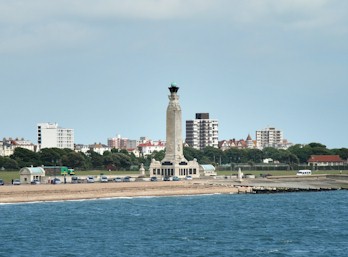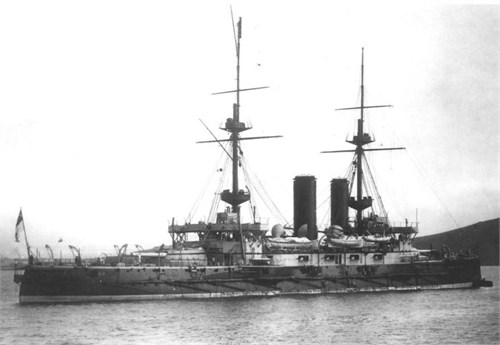|
|
| Home Topics Memorials Miscellany Transcripts References Family History Glossary Latest Beeston Blog About us | Site Search |
|
Robert Heald Beckett was born on the 22nd January 1880 in Brant Broughton, Lincolnshire the son of Francis Beckett (c1837-1908) who kept a grocer's shop in the village, and his wife Harriett (née Heald, c1849-1926). By 1901, he had joined the Royal Navy but, by 1911, he had left the service, had moved to Beeston2 and had found work as a factory engine stoker at the Ericsson Telephone works in Beeston Rylands3. On 11 October 1911, he married Edith Annie Freeman (1886-1972) in Breadsall, Derbyshire, the couple then making their home at 43 Gladstone Street, Beeston. Their son, Robert Thomas, was born in 1912 and another son, John F, was born the following year. James Frederick Williams was born in Leeds on the 18th September 1895, the son of John George Williams (c1856-?1928) and his wife Elizabeth (b. c1867). Soon after James's birth, the family moved to 41 Herbert Street, Nottingham5 where the last of the couple's four children was born in 1900, In 1911 the family was 28 Lady Bay Road, West Bridgford, Nottinghamshire with John George working as a self-employed window cleaner6. At some time after that they moved to 31 Trent Road, Beeston, Notts, the address of his mother in the Royal Navy record of his death7.
The battleship HMS Bulwark had been launched in October 1899 and completed in 1902. Its early career had been beset with mishaps but these incidents were nothing compared with the final drama, which took place on Thursday 26th November 1914. Having sailed into Sheerness harbour, Bulwark was taking aboard ammunition when an explosion took place that lit up the sky. The explosion was heard in Whitstable, 20 miles away, and in Southend the pier was shaken by the explosion. An eye witness, who was onboard a nearby ship, described the scene : “I was at breakfast when I heard the explosion, and I went on deck. My first impression was that the retort was produced by the firing of a salute by one of the ships, but the noise was exceptional. When I got on deck I soon saw that something awful had happened. Dense volumes of smoke obscured the water and sky. We were at once ordered to the scene of the disaster to render what assistance we could. At first we could see nothing, but when the smoke cleared a bit, we were horrified to find the battleship Bulwark had gone. She seemed to have entirely vanished from sight, but a little later we detected a portion of the huge vessel showing about 4ft above water. We kept a vigilant look out for the crew but only saw two men.”Boats of all kinds were launched from the nearby ships and shore to pick up survivors and the dead. Initially, 14 men survived the disaster but some died later from their injuries. One of the survivors, an able seaman, had a miraculous escape. He said he was on the deck of the Bulwark when the explosion occurred. He was blown into the air, fell clear of the debris and managed to swim to wreckage and keep afloat until he was rescued. None of the Bulwark’s officers survived, although the bodies of eleven of them were recovered for eventual burial. Everything was all over in three minutes, with, as it was to turn out, only 12 survivors out of a ship's compliment of 726. Rescue work continued during the remainder of the week and on Sunday November 28th an inquest was opened at the Royal Naval Hospital in Chatham. By this time 30 bodies had been recovered and Cook's Mate William Frederick Cooper, who had been on sick leave on shore at the time of the accident, had been able to identify 14 of these bodies. On Monday 20th November, the funerals of 21 victims took place at the Naval Burial Ground at Woodlands Cemetery, Gillingham. During January 1919 many more bodies of the Bulwark’s crew were washed up on the Kent shoreline. Many were identified some were not. Woodlands Cemetery in Gillingham, Kent has 82 graves to unknown ratings from World War I, including crew members from HMS Bulwark. Twelve lie in individual graves, 70 are in a large communal grave with those from another disaster in Sheerness the following year. Of those identified, 67 are buried in the Woodlands Cemetery. An official investigation determined that, rather that it being the work of an enemy saboteur - an early theory - the most likely cause of the accident was the overheating of cordite charges against a boiler room bulkhead. Alternatively, it may have been caused by a shell being dropped point down, seting off a chain reaction amongst the stored shells. Stoker Beckett and Ordinary Seaman Williams have no grave but the sea and are commemorated on the Portsmouth Naval Memorial. There is a memorial to those lost in the tragedy in the Dockyard Church, Sheerness. Footnotes 1The photograph of Portsmouth Naval Memorial is from the Commonwealth War Graves Commission website. (http://www.cwgc.org) 2Beeston, Notts, 1911 Census, Piece 20426 RD429 SD3, ED1, Schedule 72 - boarding with Joseph Hassell and his wife Sarah Ann 3'Electrical Review' dated 3 July 1908, describes the boiler arrangements in the factory : 'The boiler house contains three boilers, one of which is fitted with a Henderson stoker burning shavings, etc., drawn direct from the cabinet factory by a dust-exhaust plant. Each of the boilers, which are of the Lancashire type, measures 30ft. x 8ft. 6in.; two of them are hand fired. 4He was baptised at St Peters Church, Leeds on 27 October 1895 5Nottingham, 1901 Census, Piece 3178 Folio 94 6West Bridgford, Notts, 1911 Census, Piece 20470 RD429 SD6, ED12, Schedule 218 7'Mother : Elizabeth - 31 Trent Road, Beeston Notts' (Royal Navy & Royal Marines War Graves Roll) |
|
|||||||||||
|
|
|||||||||||||

 When war came in August 1914, both men found themselves serving alongside each other in the Royal Navy as members of the crew of HMS Bulwark (Shown
right). Beckett, the elder of the two, with previous Royal Navy experience, was serving as a Stoker 1st Class, while Williams served as an Ordinary Seaman.
When war came in August 1914, both men found themselves serving alongside each other in the Royal Navy as members of the crew of HMS Bulwark (Shown
right). Beckett, the elder of the two, with previous Royal Navy experience, was serving as a Stoker 1st Class, while Williams served as an Ordinary Seaman.